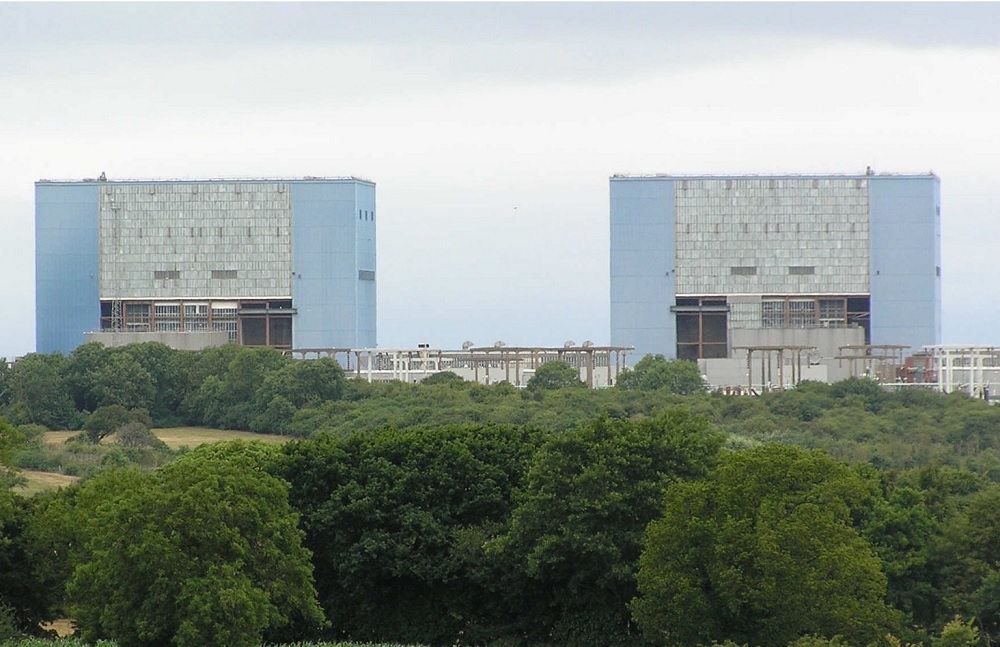Environmental Impact Assessment to be carried out on nuclear power station mud

EDF Energy has confirmed it will carry out an Environmental Impact Assessment as part of its licence application to dispose of mud dredged from the construction of the new Hinkley C nuclear power station in the sea off Cardiff Bay.
In February EDF applied to National Resources Wales for a licence to dump 800,0000 tonnes of mud dredged as part of building work for the new plant that is being built on the site of the disused Hinkley Point A facility near Bridgwater in Somerset.
Two years ago, EDF were given permission to dump 300,000 tonnes of mud from the site off the Cardiff coast, despite protests and following a Senedd debate.
A petition against the latest proposals received over 10,000 signatures and has triggered a debate in the Senedd on 21 October.
GeigerBay, a coalition of scientists, experts, individuals and organisations formed to oppose the plans, have been calling for an EIA and say there is evidence of plutonium contamination in the mud.
EDF says the Environmental Impact Assessment will be carried out in addition to a testing plan approved by Natural Resources Wales which they claim goes above and beyond internationally recognised best practice.
They said that they are making the move “in order to provide the public with further reassurance that all concerns have been addressed.”
In the letter announcing the proposals, Alexander Gray, the companies Senior Public Affairs Manager wrote: “Previous testing has shown that this mud is no different to mud found elsewhere in the Bristol Channel and is not classed as radioactive under UK law.
“EDF wants to reassure the public of the safety of this activity and has listened carefully to the concerns and questions that were raised during the first phase of dredging activities.
“Hinkley Point C has commissioned CEFAS, the UK Government’s marine science experts, to undertake analysis on further sediment samples following approval of the sampling plan, which was subject to public consultation. CEFAS has some of the most advanced radiation testing equipment in the world.
“For this second phase of dredging, we intend to go further than normal regulatory requirements in order to provide the public with additional reassurance. We have proposed a testing plan that goes above and beyond internationally recognised best practice, with more samples at greater depth and with a greater range of analysis – including tests for pure alpha-emitting particles and tritium.”
‘Trust’
Welcoming the announcement, Plaid Cymru’s shadow environment minister Llyr Gruffydd, who met with Natural Resources Wales last week to raise his concerns at the plans, said: “The people of Wales need every assurance possible that any dumping of mud is safe for both people and marine life.
“Trust in our regulatory authorities is paramount and I will continue to push for the maximum transparency and openness in publicising all relevant documents, so that scientists and concerned communities can assess the situation for themselves.”
GeigerBay complained of a lack of detail in the proposals from EDF and said they continue to have serious concerns about the plans.
Tim Deere-Jones, Marine Pollution Researcher and Consultant, said: “EDF’s suggestion of testing the core samples at one meter intervals is tantamount to useless given that an annual deposit of sediment at Bridgewater Bay is a mere 4mm or 18mm at most. I will continue to condemn such a process until we have open and independent scoping input, otherwise we’ve got a testing exercise driven by the interests of the nuclear industry.”
Super Furry Animals musician and campaigner Cian Ciaran added: “The Senedd debate is now even more consequential, all MSs must scrutinise, investigate and question all aspects of the decision-making process involving NRW and EDF.
“Geiger Bay believes there must be no tightening of schedule on the petition during the Senedd debate, and we insist that because of new information and uncertainties reassurance must be given, but not limited to, the seven arguments raised in our petition. These points must be implemented.”
Geiger Bay’s petition demanded the EIA must:
- Include detailed baseline data on the behaviour and fate of material dumped [in 2018] at Cardiff Grounds.
- Include a full radiological analysis including detection of alpha-emitting particles [and details of the testing methods thereof.]
- Include a detailed and up to date assessment of potential radiological impacts on the population of south Wales.
- Contain nuclear pollutants on land rather than dispersing them at sea.
- Respect international agreements on marine dumping.
- Protect the Severn Estuary.
- Ensure that any Environmental Impact Assessment is not assessed by pro-nuclear interests.
Neil McEvoy MS, Leader of the Welsh National Party (WNP) said: “Any assessment must be independent. Scientists who have raised concerns must be involved in the process. I have no confidence in anything EDF, Natural Resources Wales, or the Welsh Government do in relation to Hinkley’s nuclear mud.
“It was the campaigners who proved that plutonium has leaked from Hinkley Point for decades, yet in 2018 NRW allowed 80,000 tonnes of the material to be dumped on Wales without it being tested for plutonium. There are so many questions to answer. The assessment must be independent. Nothing else is acceptable.”
Support our Nation today
For the price of a cup of coffee a month you can help us create an independent, not-for-profit, national news service for the people of Wales, by the people of Wales.





